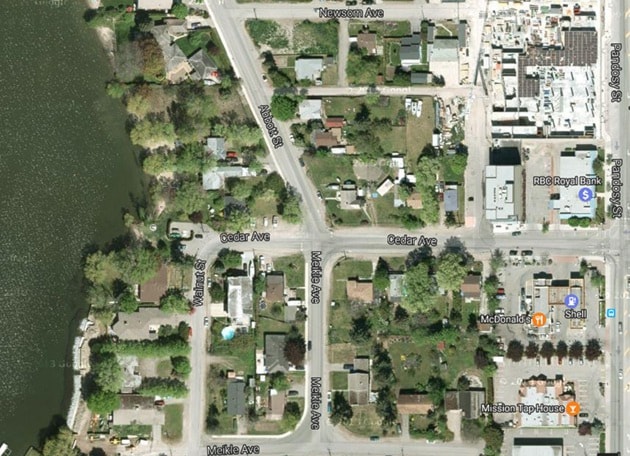To the editor:
Between September 1989 and December 1997, the City of �������� purchased 11 waterfront lots at the foot of Cedar Avenue for $3.9 million for a public park and swimming beach. This waterfront park site consists of 11 lots and two city-owned road end lots, which have a total land area of 1.57 hectares (3.88 acres).
At the time, city staff felt there was a public need for more beaches and the site was considered excellent for public swimming.
The city’s 2004 Cedar Avenue Land Use Review (also known as the Stonefield report) discussed the possibility of creating a swimming beach at the site by extending the mouth of Fascieux Creek out into the lake.
Since 2004, the City of ��������’s real estate department took full control of planning and developing this park site but made a mess of it because their plans are driven by economic and political goals that ignore the public interest and the community vision for the site.
In 2010, city staff proposed building a boutique hotel on the site, which was opposed by taxpayers and rejected by council in late 2011. Council then instructed staff to conduct a new public planning workshop, or charrette, to determine how the public wanted the park to be used, designed and built.
However, in July 2012, before the charrette began, the real estate department interfered with council’s directive by leasing two of the 13 lots to the �������� Paddle Club, a group that was newly formed to occupy the site. City staff ignored public requests for a site selection analysis to justify the use of the park and the need for a lease. Despite public opposition to parachuting the club into the park, a compliant new council specified a number of criteria for the charrette, including making the club a necessary part of the park plan.
Following the charrette, and despite public opposition, the real estate department audaciously expanded the club’s lease to five of the 13 lots in the park, which privatized use of 28 per cent of the public land.
In 2014, the 13 waterfront lots were rezoned to the city’s P3-Parks and Open Space Zone. Unfortunately, this zoning allows the real estate department to develop the site with many uses that are not consistent with the original community vision for a public swimming beach including urban agriculture, cemeteries, community gardens, outdoor recreation services, child care centres, food and liquor establishments, retail stores, and utility services.
Following this rezoning, city staff immediately halted all planning by claiming the charrette vision for the park would cost $2.2 million and could not be funded publicly. Taxpayers questioned this claim but were ignored.
In February 2016, the city’s 2030 Infrastructure Plan showed the real estate division officially delayed park construction until 2027 with a non-guaranteed $2.2 million allocation for design and park construction.
With no firm plan in place for the park, a 10-year delay gives the real estate department time to alter the original community vision for the site and to move it well away from a public swimming beach.
Their plan actually begins 27 years after the first lot was purchased. On September 19, 2016 city staff will ask council to support the conversion of the park into a dog-swimming beach — a use that was never envisioned in 1989, was never part of the 2012 charrette plan, and is not part of ��������’s OCP 2030.
[Editor’s note: On Sept. 19 �������� council opted for more study into putting a dog swimming beach into Cedar Ave. Park. See the Sept. 20 story: .]
Many taxpayers believe the real estate department has a hidden agenda to slowly recreate Cedar Ave. Park into a high rent, commercial waterfront area of hotels, marinas, restaurants and bars without any public swimming beach. They may be right.
Since 2014, the real estate department has covered the sand with large boulders along the entire southern part of beach, has leased the northern part of the beach to the private paddle club, and now wants the middle part of the beach allocated to dogs. There will be no public beach left for people to use.
That vision is not what taxpayers paid $3.9 million for.
Richard Drinnan, ��������



